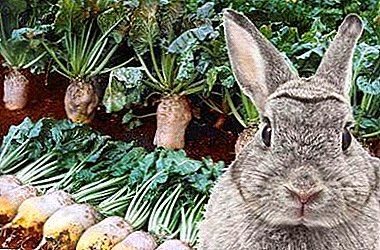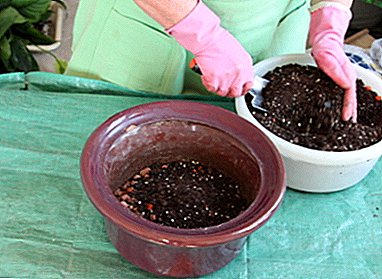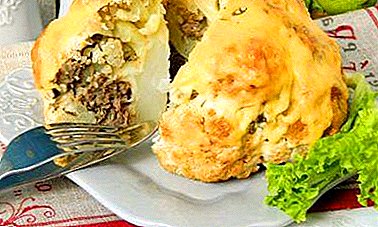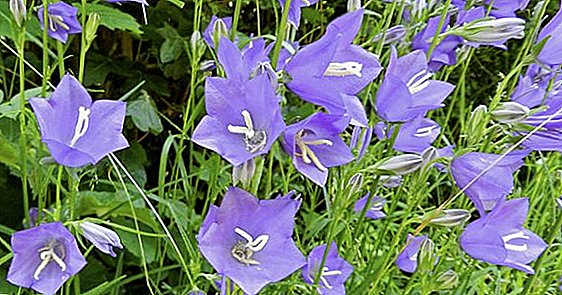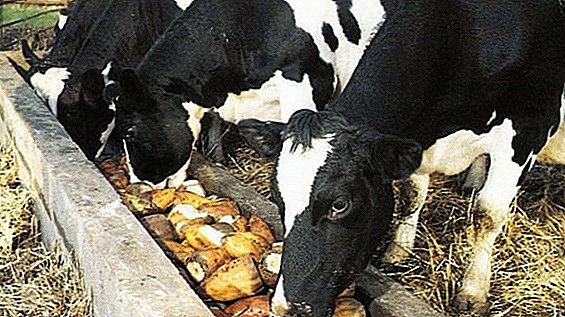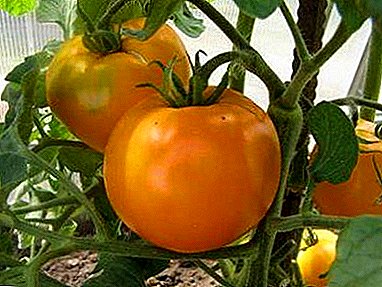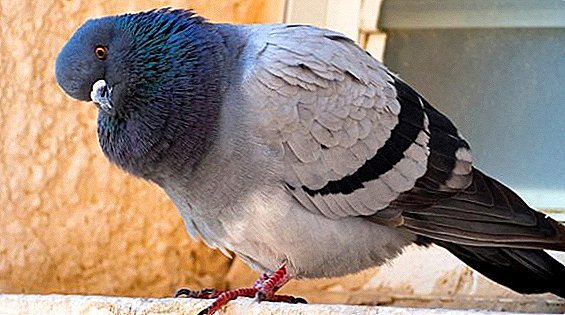 On the way to successful breeding of pigeons, many poultry farmers face a huge set of problems, one of which is complex disorders caused by salmonellosis. In just a few hours, dangerous microorganisms can instantly infect a susceptible bird organism, which threatens not only the loss of local immunity in the pigeon house, but also the death of the entire livestock. Today, there are many ways to combat this dangerous disease, but not every therapy is highly effective, as well as safe for the body of birds. In this article we will learn in detail about the main causes of salmonellosis in pigeons, as well as consider the most effective ways to treat it.
On the way to successful breeding of pigeons, many poultry farmers face a huge set of problems, one of which is complex disorders caused by salmonellosis. In just a few hours, dangerous microorganisms can instantly infect a susceptible bird organism, which threatens not only the loss of local immunity in the pigeon house, but also the death of the entire livestock. Today, there are many ways to combat this dangerous disease, but not every therapy is highly effective, as well as safe for the body of birds. In this article we will learn in detail about the main causes of salmonellosis in pigeons, as well as consider the most effective ways to treat it.
What is salmonellosis
Salmonellosis is commonly referred to as acute infectious intestinal lesions of higher animals, caused by active reproduction in the body of gram-negative (according to Gram-Weigert coloration) incompatible bacteria of the genus Salmonella.
We advise you to read about how to treat diarrhea, nausea and coccidiosis in pigeons, as well as learn how to treat diseases of pigeons that are transmitted to humans.
Today, most animals and birds show a high susceptibility to Salmonella, so the infection is actively transmitted between various genera of animals, including from animals to humans. Bacteria of the genus Salmonella characterized by high resistance to adverse environmental factors, therefore, it is not rare that they can persist in the environment outside the host organism for several months.  But it is possible to destroy the infection, for this purpose they use various disinfectant solutions, as well as prolonged surface treatment with high temperatures.
But it is possible to destroy the infection, for this purpose they use various disinfectant solutions, as well as prolonged surface treatment with high temperatures.
Did you know? The color of bacteria (Gram-Weigert method) as a method of differentiation of microorganisms according to the biochemical structure of their cell wall was first proposed in 1884 by the world-famous Danish bacteriologist Hans Gram.
After salmonella ingestion, the first symptoms of the disease develop within 13 days. Active reproduction of bacteria in the intestines is accompanied by the release of a variety of toxins that cause moisture loss, impaired activity of the vessels and the nervous system.
Ultimately, this causes a sharp increase in body temperature, abdominal pain, diarrhea and other disorders in the stomach  That is why, at the first signs of illness, isolation and obligatory treatment of affected animals and birds is shown.
That is why, at the first signs of illness, isolation and obligatory treatment of affected animals and birds is shown.
Salmonellosis can occur in several forms:
- acute - no longer than 4 days;
- subacute - Duration from 6 to 10 days;
- chronic - characterized by periodic short-term remissions throughout the lifetime of the bird. It develops on the background of an acute or subacute stage, in case the salmonella cannot be completely eliminated from the body.
The cause of the disease
There are several reasons for the development of salmonellosis, but most often the ailment is a complex effect on pigeons of various adverse factors. They cause a sharp decrease in immunity in birds, which soon leads to active damage to individual individuals, and then to the entire population.
As a result, this leads to a sharp death of the weakest birds, as well as their future offspring, since Salmonella is quite successfully able to penetrate inside the fertilized eggs developing in the mother's body. 
Feeding errors
Breeding pigeons is quite a costly activity, especially acutely this problem concerns the purchase of expensive feed. Therefore, many poultry breeders save on this part of the cost, buying inexpensive food with a fairly low quality.
As a result, there is a general lack of vitamins and important minerals in the diet of pigeons, which leads to a sharp deterioration in immunity, and with this to a decrease in the body's ability to resist various pathogenic bacteria.
Did you know? The causative agent of salmonellosis was first isolated from the environment in 1885, thanks to veterinarians Elmer Salmon and Theobald Smith.
Do not forget that many poultry farmers do not rarely neglect the general sanitary rules when storing and preparing food for birds, including during the preparation of food mixtures.  In this case, the infection becomes the cause of the use by the population of individual infected food components, which, against the background of reduced immunity in just a few days, can lead to serious diseases of the entire population. In addition, salmonella can get to pigeons and with dirty water contaminated with feces of sick birds or other pollutants.
In this case, the infection becomes the cause of the use by the population of individual infected food components, which, against the background of reduced immunity in just a few days, can lead to serious diseases of the entire population. In addition, salmonella can get to pigeons and with dirty water contaminated with feces of sick birds or other pollutants.
That is why, before filling the drinkers and bird feeders, you must make sure that the contents are in proper sanitary condition. Otherwise, the neglect of purity can cause the development of other serious infections (hemophilia, colibacteriosis, streptococcosis, ornithosis, etc.).
Poultry farmers will be useful to learn all about feeding domestic pigeons.
Poor habitat
As mentioned above, salmonella can persist for quite a long time in litter, litter and outdoor objects. However, the active development of bacteria is observed only if favorable conditions for this have arisen.  Pigeon droppings as salmonella habitat. Neglect of periodic cleaning of pigeon houses contributes to the accumulation of various physiological fluids in the room, which creates the necessary microclimate for the comfortable development of bacteria. As a result, several bacteria can cause contamination of even sterile water and feed and in just a few days become a threat to the entire population.
Pigeon droppings as salmonella habitat. Neglect of periodic cleaning of pigeon houses contributes to the accumulation of various physiological fluids in the room, which creates the necessary microclimate for the comfortable development of bacteria. As a result, several bacteria can cause contamination of even sterile water and feed and in just a few days become a threat to the entire population.
Therefore, the observance of general sanitary rules for breeding poultry is one of the main conditions for the successful prevention of this dangerous disease.
In addition, the disease can be the result of suffocation in the dovecote. Insufficient air circulation in the premises of the mass stay of birds contributes to the emergence of a special microclimate, which, in conditions of even necessary cleanliness in the poultry house, creates the most favorable conditions for active reproduction of bacteria outside the body and subsequent passive migration to water or food.  Therefore, before actively breeding birds in their own loft, you must make sure that the future premises are suitable for this.
Therefore, before actively breeding birds in their own loft, you must make sure that the future premises are suitable for this.
Important! To protect the pigeon house from salmonellosis pathogens, periodically treat the room with 1% formalin solution or 2% sodium hydroxide solution.
Forms of the disease and their symptoms
Modern veterinary medicine has several options for the development of salmonellosis in birds. Often they have the characteristic manifestations and symptoms that signal the active damage to the body of pigeons of a pathogenic bacterium and the special nature of its course. There are hidden, obvious, articular, intestinal and nervous forms.
Hidden
The hidden course of salmonellosis is one of its most dangerous forms, which often develops in adults. After infection, the pathogenic bacterium actively develops in the body of birds, affecting the intestines, liver, excretory system and other organs. In this case, the ailment does not have an acute manifestation and is often asymptomatic.  The main danger of hidden salmonellosis is that the bacterium during this period actively affects the space of the entire pigeon house, thanks to the infected feces. In the end result, this becomes the cause of infection not only of the bird, but also of a decrease in the activity of their growth, as well as a temporary loss of the ability to produce healthy and viable offspring.
The main danger of hidden salmonellosis is that the bacterium during this period actively affects the space of the entire pigeon house, thanks to the infected feces. In the end result, this becomes the cause of infection not only of the bird, but also of a decrease in the activity of their growth, as well as a temporary loss of the ability to produce healthy and viable offspring.
The main symptoms of the latent form of the disease:
- uneven egg deposition in adults;
- the laying of unfertilized eggs;
- the death of embryos inside eggs;
- weight loss of birds;
- short diarrhea (rare).
Explicit
The apparent form of the course of salmonellosis often develops against the background of a long latent course of the disease as a result of a sharp decline in the body's defenses. Most often it occurs in young pigeons or chicks that have developed from eggs infected with a bacterium in the womb.  Salmonellosis tends to develop from bacterial-infected eggs in the womb. This type of infection is considered one of the most dangerous and complex, as it is not rare in just a few weeks that bacterial damage to organs and systems leads to the death of the bird.
Salmonellosis tends to develop from bacterial-infected eggs in the womb. This type of infection is considered one of the most dangerous and complex, as it is not rare in just a few weeks that bacterial damage to organs and systems leads to the death of the bird.
The main symptoms of the apparent form of the disease:
- loss of appetite or a complete rejection of food;
- excessive thirst;
- apathy;
- decrease in motor activity, including the ability to fly;
- disheveled plumage;
- severe diarrhea.
Articular
Articular salmonellosis often develops against the background of hidden forms of manifestation of the disease in young or mature pigeons. The disease leads to the defeat by the bacteria of the musculoskeletal system and joints in particular.  As a result, pathological accumulation of physiological fluids occurs in various parts of the skeleton of pigeons, which causes inflammation and almost complete loss of motor function of the affected joint. In the end, this leads to a partial loss of the ability to actively move, which in the advanced case leads to the death of the bird.
As a result, pathological accumulation of physiological fluids occurs in various parts of the skeleton of pigeons, which causes inflammation and almost complete loss of motor function of the affected joint. In the end, this leads to a partial loss of the ability to actively move, which in the advanced case leads to the death of the bird.
The main symptoms of articular salmonellosis are:
- compaction of muscle tissue and its gradual depletion;
- trembling or twitching limbs;
- decrease in motor activity, including the ability to fly;
- the appearance of a small pea under the skin over individual joints.
Intestinal
Intestinal salmonellosis is one of the most common forms of manifestation of the disease. This pathology occurs in virtually all age groups of birds, regardless of age, but most often this infection is observed in adults or young individuals.  As a result of active damage to the body, the causative agent of the disease is introduced into the intestines of the bird and hampers its activity, which often becomes the main cause of ulcerative erosion of the intestine and its appendages.
As a result of active damage to the body, the causative agent of the disease is introduced into the intestines of the bird and hampers its activity, which often becomes the main cause of ulcerative erosion of the intestine and its appendages.
In addition, the intestine becomes a favorable environment for the active development and spread of the parasite in the dovecote with the droppings, therefore, not infrequently running infection can cause a full-scale epidemic and sudden death of birds. Intestinal infection may be acute, but if delayed treatment becomes chronic disease.
The main symptoms of the disease:
- weight loss in affected individuals;
- intestinal inflammation, which manifests as fluid and profuse diarrhea;
- the appearance of bloody discharge in the litter;
- bile acquires a characteristic greenish tint;
- severe contamination of tail feathers with feces.
 Blood in the litter, as one of the main symptoms of salmonellosis
Blood in the litter, as one of the main symptoms of salmonellosis
Nervous
The nervous form of salmonellosis is rare. In most cases, adult birds suffer from this pathology, since its development requires quite a long chronic defeat of the body.
Did you know? As a universal antibiotic for the preparation of drugs, ampicillin was first used in 1961 within the walls of the British pharmaceutical holding Beechem.
As a result of the active development of bacteria, pathogenic strains lead to the destruction of nervous tissue, which often becomes the cause of complete damage to the nervous system. And in case of late treatment, this leads to the death of the bird.
The main symptoms of the pathology:
- severe cramps;
- nerve head tilting back;
- apathy;
- refusal of food;
- decrease in motor activity, including the ability to fly.

Treatment of salmonellosis in pigeons
All sorts of infectious lesions of poultry are one of the most common reasons that prevent the prosperous poultry industry, regardless of the climatic characteristics of the region. Therefore, for more than a decade, various traditional and folk methods have been used to combat them.
However, not every one of them is distinguished by its cheapness and high efficiency, therefore, we will further consider only the most popular ones.
Important! In case of detection of the first signs of salmonellosis, you should immediately contact an experienced veterinarian for help. Birds are characterized by a sufficiently active metabolism, so the infection can in a few days turn into a serious epidemic.
Drugs
Most often, modern veterinary therapies include the following highly active bacteriostatic drugs:
- "Ampicillin" - a broad spectrum antibiotic drug that relates to synthetic analogues of penicillins. It is most effective in the treatment of articular salmonellosis. The antibiotic is used orally, with drinking water or food at the rate of 20 mg / kg of body weight per day. To do this, Ampicillin is uniformly dissolved in a daily dose of water or feed, and then the resulting solutions completely replace food or water. The duration of such therapy is from 5 to 10 days;

- "Baytril" - broad spectrum antimicrobial agent based on enrofloxacin. In the body of pigeons, the drug is administered orally with drinking water. To do this, 0.5 ml of the product is diluted in 10 liters of water, and then the resulting solution completely replace the drinking water. The general hive of treatment of Baytril infection is from 3 to 5 days;
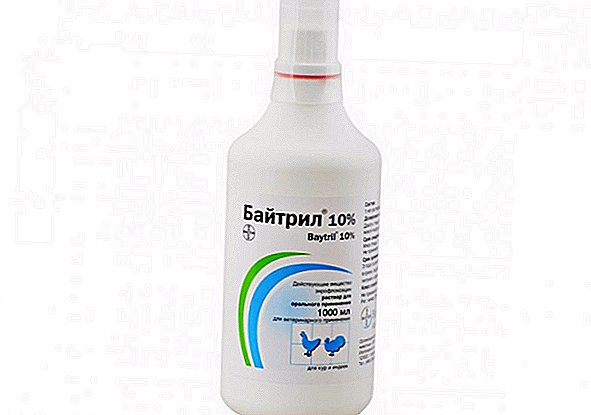
- "Biomitsin" - antibiotic drug with a wide range of effects for animals and birds. The tool belongs to the group of tetracyclines and is based on synthetic analogues of natural antibiotics secreted by microorganisms of the genus. Actinomyces in the course of their life. The drug is administered orally, with food or drinking water at the rate of 20-30 mg / kg of body weight per day. To this end, the agent is uniformly dissolved in a daily dose of water or feed. The general course of therapy is no more than 7-10 days;
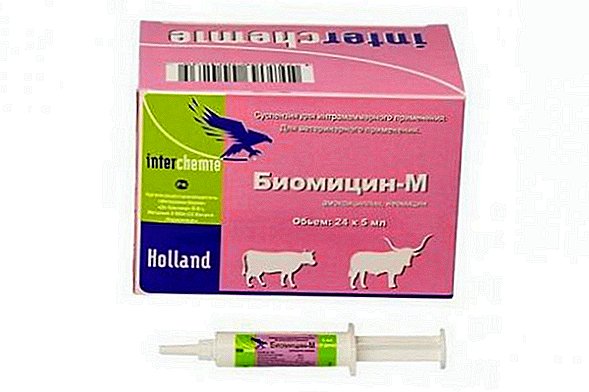
- "Levomitsetin" - synthetic antibiotic agent, which is an artificial analogue of the antibiotic chloramphenicol, produced by bacteria of the genus Streptomyces due to its natural vital activity. "Levomycetin" is introduced into the body orally, with drinking water or food 3 times a day at 30-50 mg / kg poultry weight. To do this, the required amount of the drug is uniformly dissolved in a daily dose of water or feed. The general course of therapy is no more than 10 days;
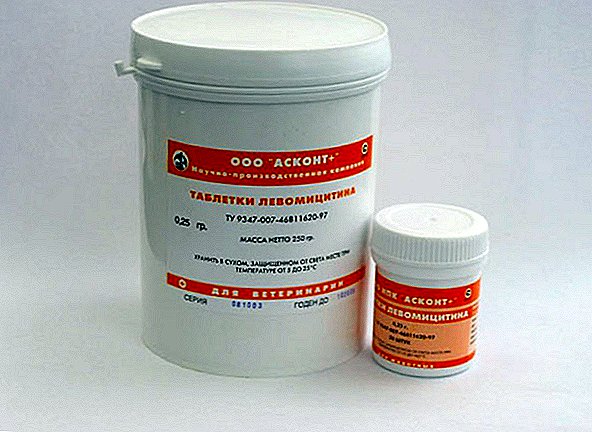
- "Terramycin" - a tool with powerful antibiotic effects of a wide spectrum, based on oxytetracycline dihydrate. The drug is characterized by mild effects on the body of pigeons, so it can be actively used for nestlings or juveniles without fear. "Terramycin" is introduced into the body orally, with drinking water or food 3 times a day at 20-50 mg / kg poultry weight. To do this, the required amount of the drug is uniformly dissolved in a daily dose of water or feed, and then the resulting solutions completely replace food or water. The general course of therapy is 7 days;
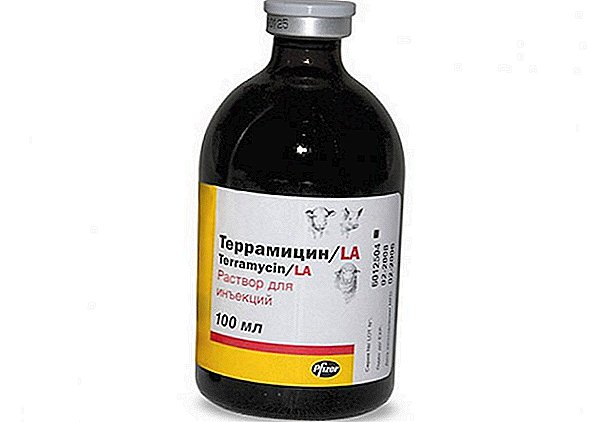
- "Tetracycline" - natural antibiotic drug, widely used in veterinary medicine for the treatment of various infections in animals and birds. The product is based on natural compounds produced by the bacterium. Streptomyces aureofaciens in the course of their life. "Tetracycline" is administered orally, with feed or drinking water at the rate of 20-30 mg / kg of body weight per day (for 2 doses). To this end, the agent is uniformly dissolved in water or feed. The general course of therapy is 7-10 days;
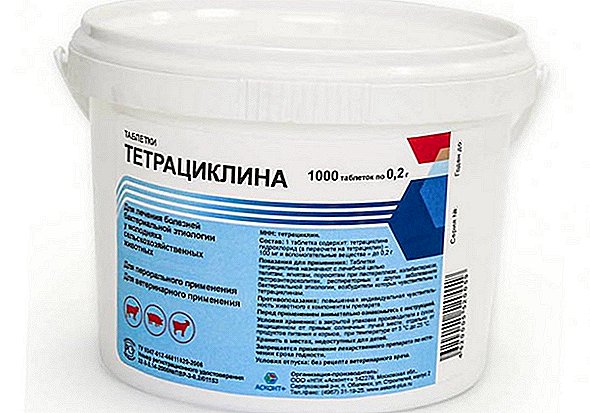
- "Enroflon" - An antibiotic drug, actively used to treat a variety of infections in animals and birds, based on enrofloxacin. In the body of pigeons means is administered orally with drinking water. For this, the preparation is diluted in a daily dose of water at the rate of 0.5 ml / l, after which the resulting liquid completely replaces the drinking water. The general course of treatment is from 3 to 5 days;

- "Enteroseptol" - broad-spectrum antimicrobial agent based on hydroxyquinoline. The drug gently affects the pathogenic bacteria in the body, causing the normalization of the natural microflora. "Enteroseptol" is administered orally, with drinking water or food 3 times a day, 30-50 mg / kg of bird weight. To do this, the required amount of the drug is uniformly dissolved in a daily dose of water or feed, and then the resulting solutions completely replace food or water. The general course of therapy is about 7 days, but if necessary, treatment continues until the pigeons recover fully.
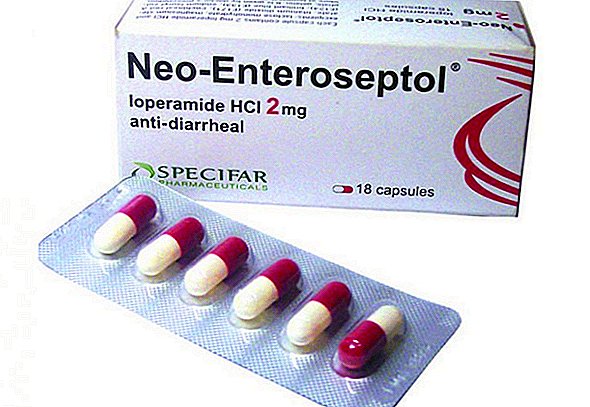
You will also be interested to learn how to use drugs such as Rodotium, Virosalm, La Sota, Nifulin Forte, as well as other medicines and vitamins for pigeons.
Folk remedies
Among the most common treatments for salmonellosis in pigeons, the most popular are the following:
- pharmaceutical chamomile infusion: 1 teaspoon of dry herbs insist in 250 ml of boiling water for 1-2 hours. После полного остывания настоя жидкость тщательно процеживают, а затем используют в качестве питьевой воды на протяжении недели.This tool has a fairly mild effect on the body, so it can be safely used, regardless of the age of the bird;
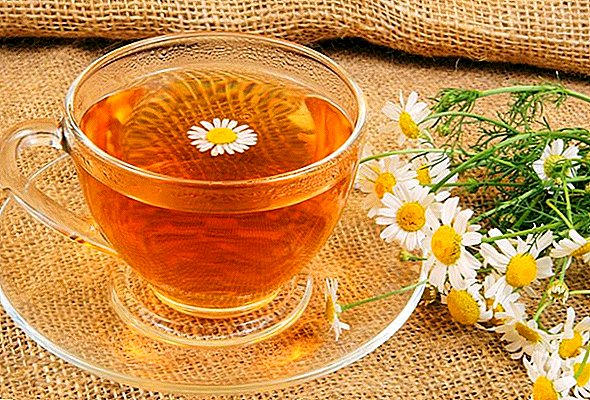
- Pharmaceutical infusion of propolis or crushed perga: these bee products proved to be excellent during the laying of eggs, as they help protect not only the organism of adult birds from infection, but also their future offspring. A tablespoon of infusion or crushed on a kitchen grater perga thoroughly dissolved in a liter of drinking water, and then the resulting solution is used as drinking water. The feeding of pigeons is carried out throughout the entire breeding period, in the remaining periods of the year the procedure is carried out in small courses, with a duration of not more than 1 week;
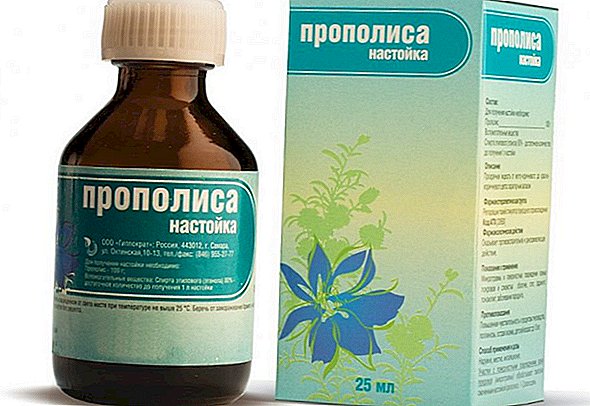
- decoction of pine needles: the tool has a powerful antimicrobial effect, as well as a source of many vitamins and other substances that are useful for immunity. To prepare the anti-salmonella agent, 1 cup of pure pine needles is drawn in 1 liter of boiling water for 1-2 hours, and then the resulting liquid is carefully filtered. Infusion completely replace drinking water in the dovecote for 1 week and, if necessary, watering is prolonged until the infection is completely eliminated;
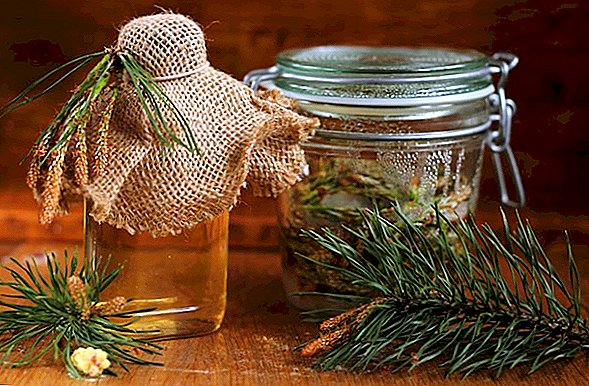
- sunflower oil: This product has a huge amount of essential fatty acids, especially important for the normal functioning of the metabolism, including the protective abilities of the immune system. Oil is included in the feed periodically, during the mass distribution of infectious diseases at the rate of 1 tbsp. l / kg dry food.
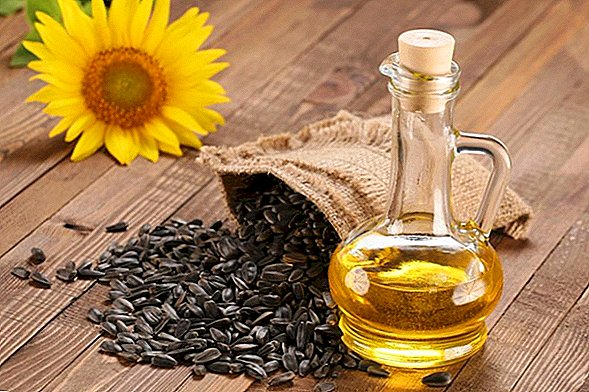
Prevention and Vaccination
High-quality and timely prevention is the only measure that makes it possible to avoid a dangerous infection in the pigeon house, as well as the death of adults and their offspring. Therefore, this event should be carried out necessarily and with great care, for this:
- in the period of mass distribution of the disease should limit the contact of pigeons with wild relatives;
- it is necessary to provide the birds with a high-calorie, but healthy diet;
- it is necessary to use clean, high-quality, pre-prepared water and feed;
- be sure to comply with the necessary sanitary standards when keeping pigeon house;
- it is necessary to periodically change the water (at least 1 time per day) and clean the dovecote from feces and feed residues (at least 2-3 times per week);
- Do not neglect the periodic disinfection of the pigeon house (at least 1 time per week).
 Periodic disinfection of dovecote
Periodic disinfection of dovecoteIt is necessary to remember about preventive medical methods with the use of powerful antimicrobial drugs with a wide range of effects. The most popular and effective among them is considered the drug "Parastop".
Periodic vaccination of pigeons is an important measure to preserve the health of birds. Learn from which diseases and how to vaccinate pigeons.
The tool is actively used on the territory of the CIS for medicinal and prophylactic purposes both for small domestic pigeon houses and for keeping large livestock. For medicinal purposes, "Parastop" is administered orally, for this 3 scoops of the drug are dissolved in 1 kg of food or 2 liters of water, to choose from. The resulting mixtures completely replace the feed or drinking water.
The duration of therapy is about 10-14 days. As a preventive measure, Parastop is also used orally, mixed with feed or drinking water (3 scoops per kg feed or 2 liters of water). The resulting mixtures completely replace the feed or drinking water. Preventive therapy is carried out in small courses, lasting no more than 7-10 days.  The most favorable period for the use of funds is the beginning of molting birds or 1-2 weeks before breeding.
The most favorable period for the use of funds is the beginning of molting birds or 1-2 weeks before breeding.
Important! Folk remedies are not the basis of anti-salmonella therapy, since an exceptionally highly active antibiotic can cope with a dangerous infection. Therefore, such therapy should be used exclusively for auxiliary purposes.
To avoid the serious effects of salmonellosis, many have resorted to vaccination of birds. For the first time such drugs are administered to chicks at the age of 8 weeks, after which further revaccination is carried out 1 time in 2 years. Most suitable for use are modern vaccines based on living components. They provide an opportunity to purchase a durable and long-lasting immunity with minimal harm to the body.  Salmonellosis is a fairly serious infectious disease that is quite common among animals and birds, including pigeons. The disease causes severe damage to the body, and is also characterized by a fairly high infectiousness in relation to man.
Salmonellosis is a fairly serious infectious disease that is quite common among animals and birds, including pigeons. The disease causes severe damage to the body, and is also characterized by a fairly high infectiousness in relation to man.
Read about what drugs are used to make poison for pigeons.
Today, there are many different means to treat this disease, but the most effective measure is the timely prevention of salmonellosis, based on the highly active drug Parastop.















